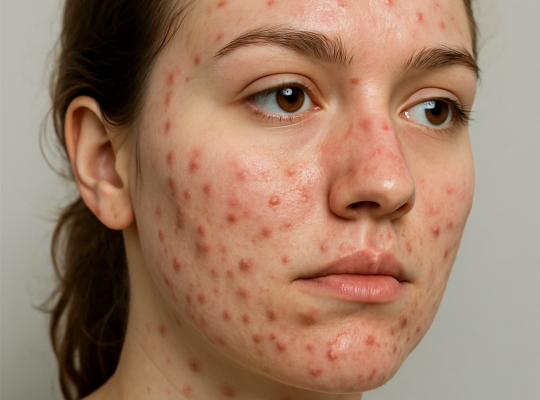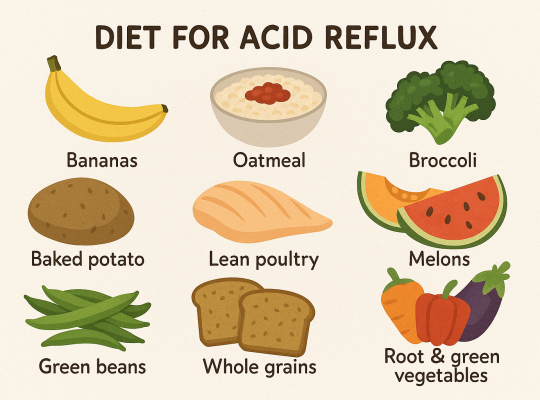Smoking has long been shrouded in a veil of misconceptions, but the stark reality is far more alarming than most realize. While many are aware of the common risks associated with tobacco use, few can grasp the depth of smoking’s impact on health. In “Unmasking the Truth: 10 Shocking Effects of Smoking on Your Health You Need to Know,” we dive deep into the startling revelations that go beyond the surface. From the profound toll on your lungs to the insidious ways it affects your heart and mind, the effects of smoking can be both immediate and long-lasting. This article lays bare the critical truths that could change your life or the life of someone you care about. Buckle up as we unravel the hidden dangers and empower you with knowledge that may inspire a much-needed change. Your health deserves more than smoke and mirrors—let’s shed light on the real threats lurking within every puff.
The Impact of Smoking on Lung Health
When we think about smoking, our minds almost instantly connect it to lung health. The lungs are, after all, the primary organs that bear the brunt of smoking’s toxic assault. Each inhalation of cigarette smoke delivers a cocktail of over 7,000 chemicals, including tar, nicotine, carbon monoxide, and formaldehyde, directly into the lungs. This toxic mix wreaks havoc on the delicate structures within the lungs, leading to inflammation, infection, and a significant reduction in lung capacity. Chronic Obstructive Pulmonary Disease (COPD) is a common outcome, characterized by persistent respiratory symptoms and airflow limitation. COPD encompasses conditions like chronic bronchitis and emphysema, both of which are disabling and progressive.
The damage caused by smoking is cumulative, meaning the longer you smoke, the more extensive the damage to your lung tissue. Even occasional smoking can lead to severe lung damage over time. One of the most insidious aspects of smoking is that it can take years for the symptoms of lung damage to become apparent. By the time chronic cough, shortness of breath, and frequent respiratory infections are noticed, significant and often irreversible damage has already been done. Moreover, smoking is the leading cause of lung cancer, responsible for approximately 85% of cases. Lung cancer remains one of the most lethal forms of cancer, with a five-year survival rate of just 15%.
Quitting smoking can lead to improvements in lung health, but the extent of recovery varies depending on the duration and intensity of smoking. Within a few weeks of quitting, lung function begins to improve, and the risk of infections decreases. However, the risk of lung cancer remains elevated for many years after quitting, underscoring the importance of early cessation. Smoking cessation programs, medications, and support groups can be invaluable resources for those looking to quit and reclaim their lung health. Ultimately, protecting your lungs from the harmful effects of smoking is one of the best decisions you can make for your overall health and longevity.
Smoking and Cardiovascular Disease
Smoking is a major risk factor for cardiovascular disease (CVD), which includes heart disease, stroke, and hypertension. The chemicals in cigarette smoke damage the lining of the arteries, leading to the build-up of fatty deposits known as atherosclerosis. This process narrows the arteries and restricts blood flow, increasing the risk of heart attacks and strokes. Nicotine, the addictive substance in cigarettes, also raises blood pressure and heart rate, putting additional strain on the cardiovascular system. Smokers are two to four times more likely to develop heart disease compared to non-smokers, and the risk increases with the number of cigarettes smoked daily.
The impact of smoking on the cardiovascular system is profound and multifaceted. Carbon monoxide, a byproduct of cigarette smoke, binds to hemoglobin in red blood cells, reducing the blood’s ability to carry oxygen. This leads to hypoxia, or oxygen deprivation, which can damage tissues and organs, including the heart. Additionally, smoking promotes the formation of blood clots by increasing the levels of fibrinogen and platelets in the blood. Blood clots can block arteries and lead to heart attacks and strokes. The inflammatory response triggered by smoking further exacerbates the damage to the cardiovascular system, contributing to the progression of atherosclerosis and other cardiovascular conditions.
Quitting smoking can significantly reduce the risk of cardiovascular disease, even in long-term smokers. Within 20 minutes of quitting, heart rate and blood pressure begin to normalize. Within 24 hours, the risk of heart attack starts to decrease. Over time, the risk of heart disease drops to that of a non-smoker, highlighting the body’s remarkable ability to heal and recover. Lifestyle changes, such as adopting a healthy diet, engaging in regular physical activity, and managing stress, can further enhance cardiovascular health and reduce the risk of disease. By quitting smoking, individuals can protect their hearts and improve their overall quality of life.
The Connection Between Smoking and Cancer
Smoking is a leading cause of cancer, not only in the lungs but also in many other parts of the body. The carcinogens in cigarette smoke can damage the DNA in cells, leading to mutations and the development of cancerous tumors. In addition to lung cancer, smoking is associated with cancers of the mouth, throat, esophagus, pancreas, bladder, kidney, liver, stomach, and cervix. The risk of developing cancer increases with the number of cigarettes smoked and the duration of smoking. Smokers are 15 to 30 times more likely to develop lung cancer compared to non-smokers, and the risk remains elevated even after quitting.
The link between smoking and cancer is well-established through extensive research and epidemiological studies. The International Agency for Research on Cancer (IARC) classifies tobacco smoke as a Group 1 carcinogen, meaning it is known to cause cancer in humans. The carcinogens in cigarette smoke, such as benzene, formaldehyde, and polycyclic aromatic hydrocarbons, can initiate and promote the development of cancer by causing genetic mutations and interfering with cellular processes. The immune system, which plays a critical role in detecting and eliminating cancerous cells, is also compromised by smoking, allowing cancer cells to proliferate unchecked.
Quitting smoking is one of the most effective ways to reduce the risk of cancer. The risk of lung cancer decreases by 50% within 10 years of quitting, and the risk of other smoking-related cancers also declines over time. Early detection and prevention are key to improving cancer outcomes, and regular screenings can help identify cancer at an early, more treatable stage. Public health initiatives, such as tobacco control policies, smoking cessation programs, and education campaigns, are essential in reducing smoking rates and preventing cancer. By understanding the connection between smoking and cancer, individuals can make informed choices to protect their health and reduce their risk of disease.
Smoking’s Effects on Oral Health
The detrimental effects of smoking extend to oral health, impacting the teeth, gums, and overall oral hygiene. Smoking is a major cause of periodontal disease, a serious infection of the gums that can lead to tooth loss if left untreated. The chemicals in tobacco smoke reduce blood flow to the gums, impairing the healing process and making it easier for bacteria to accumulate. Smokers are more likely to develop plaque and tartar on their teeth, which can lead to cavities and tooth decay. Additionally, smoking causes bad breath and can stain teeth, leading to cosmetic concerns and reduced self-confidence.
Periodontal disease is one of the most common oral health issues associated with smoking. The inflammation caused by smoking damages the soft tissue and bone that support the teeth, leading to symptoms such as red, swollen gums, bleeding while brushing or flossing, and loose teeth. If left untreated, periodontal disease can result in tooth loss and may require complex and costly dental treatments. Smoking also increases the risk of oral cancer, which can affect the lips, tongue, cheeks, and throat. Early signs of oral cancer include sores that do not heal, lumps, and persistent pain or discomfort.
Quitting smoking can significantly improve oral health and reduce the risk of periodontal disease and oral cancer. Within a few weeks of quitting, blood flow to the gums improves, and the risk of infection decreases. Regular dental check-ups and good oral hygiene practices, such as brushing and flossing, are essential in maintaining oral health and preventing disease. Dentists can provide valuable support and resources for individuals looking to quit smoking, including smoking cessation programs and education on the benefits of quitting. By prioritizing oral health, individuals can enjoy a healthier, more confident smile and reduce their risk of serious health issues.
How Smoking Affects Mental Health
The impact of smoking on mental health is often overlooked, but it is a critical aspect of overall well-being. Nicotine, the addictive substance in cigarettes, has complex effects on the brain and can influence mood, behavior, and mental health. While many people believe that smoking helps relieve stress and anxiety, the reality is that nicotine dependence can exacerbate these conditions. The temporary relief from stress that smoking provides is quickly followed by withdrawal symptoms, leading to a cycle of dependence and increased anxiety. Smokers are also more likely to experience depression and other mental health disorders compared to non-smokers.
The relationship between smoking and mental health is bidirectional, meaning that mental health conditions can increase the likelihood of smoking, and smoking can worsen mental health. Nicotine affects the brain’s reward system, increasing the release of dopamine, a neurotransmitter associated with pleasure and reward. This creates a temporary feeling of well-being, but as the effects of nicotine wear off, withdrawal symptoms set in, leading to irritability, anxiety, and depression. Over time, the brain becomes reliant on nicotine to maintain normal function, making it difficult to quit and perpetuating the cycle of addiction.
Quitting smoking can have significant benefits for mental health. Studies have shown that individuals who quit smoking experience improvements in mood, anxiety, and overall mental well-being. The benefits of quitting are comparable to those of taking antidepressant medications, highlighting the profound impact of smoking cessation on mental health. Support from mental health professionals, smoking cessation programs, and social support networks can help individuals navigate the challenges of quitting and improve their mental health. By breaking the cycle of nicotine dependence, individuals can achieve better mental health and a higher quality of life.
The Role of Smoking in Respiratory Conditions
Beyond lung cancer and COPD, smoking is a major contributor to a range of respiratory conditions that can significantly impair quality of life. Asthma, a chronic inflammatory disease of the airways, is exacerbated by smoking. Smokers with asthma experience more frequent and severe asthma attacks compared to non-smokers, and smoking can reduce the effectiveness of asthma medications. The irritants in cigarette smoke cause inflammation and narrowing of the airways, leading to symptoms such as wheezing, shortness of breath, and chest tightness. In children, exposure to secondhand smoke can increase the risk of developing asthma and other respiratory conditions.
Chronic bronchitis, a type of COPD, is characterized by a persistent cough and the production of mucus. Smoking is the primary cause of chronic bronchitis, and the condition can lead to long-term respiratory issues and reduced lung function. The inflammation and damage caused by smoking make it difficult for the lungs to clear mucus, leading to frequent respiratory infections and difficulty breathing. Respiratory infections, such as pneumonia and influenza, are also more common in smokers due to the weakened immune system and damaged respiratory tissues. These infections can be severe and even life-threatening, particularly in individuals with underlying health conditions.
Quitting smoking can lead to significant improvements in respiratory health. The risk of respiratory infections decreases, and lung function begins to improve within weeks of quitting. For individuals with asthma, quitting smoking can lead to better control of symptoms and improved response to medications. Respiratory rehabilitation programs, which include exercise, education, and support, can help individuals with chronic respiratory conditions improve their quality of life and manage their symptoms. By quitting smoking, individuals can protect their respiratory health and reduce the risk of serious respiratory conditions.
Smoking and Its Impact on Skin Health
The effects of smoking on skin health are both visible and profound. Smoking accelerates the aging process, leading to premature wrinkles, sagging skin, and a dull complexion. The chemicals in cigarette smoke damage collagen and elastin, the proteins that give skin its strength and elasticity. This leads to the development of fine lines and wrinkles, particularly around the mouth and eyes, known as “smoker’s lines.” The reduced blood flow caused by smoking also deprives the skin of essential nutrients and oxygen, leading to a pale, sallow complexion. Smokers are more likely to develop age spots and uneven skin tone, further contributing to an aged appearance.
In addition to premature aging, smoking can exacerbate skin conditions such as psoriasis and eczema. Psoriasis, an autoimmune condition that causes red, scaly patches on the skin, is more common and severe in smokers. The inflammation caused by smoking can trigger flare-ups and make the condition more difficult to manage. Eczema, a condition characterized by dry, itchy skin, can also be worsened by smoking. The irritants in cigarette smoke can lead to skin irritation and increased itching, making it challenging to control eczema symptoms. Additionally, smoking can impair the skin’s ability to heal, leading to prolonged recovery times for cuts, wounds, and infections.
Quitting smoking can lead to noticeable improvements in skin health. Within weeks of quitting, blood flow to the skin improves, leading to a healthier, more radiant complexion. The risk of developing skin conditions such as psoriasis and eczema decreases, and existing conditions may become easier to manage. Skincare products and treatments can also be more effective once the damaging effects of smoking are removed. By quitting smoking, individuals can enhance their skin’s appearance and health, contributing to a more youthful and vibrant look.
Secondhand Smoke: The Hidden Dangers
The dangers of smoking extend beyond the smoker to those exposed to secondhand smoke. Secondhand smoke, also known as passive smoke, is the combination of smoke exhaled by the smoker and smoke from the burning end of a cigarette. It contains many of the same harmful chemicals as the smoke inhaled by the smoker, including carcinogens and toxicants. Non-smokers exposed to secondhand smoke are at risk of many of the same health issues as smokers, including lung cancer, heart disease, and respiratory conditions. Children are particularly vulnerable to the effects of secondhand smoke, and exposure can lead to sudden infant death syndrome (SIDS), asthma, and respiratory infections.
The impact of secondhand smoke on children is especially concerning. Infants and young children exposed to secondhand smoke are at higher risk of developing ear infections, bronchitis, pneumonia, and reduced lung function. Pregnant women exposed to secondhand smoke are more likely to have low birth weight babies, which can lead to a range of health problems. The harmful effects of secondhand smoke on children highlight the importance of creating smoke-free environments in homes, cars, and public spaces. Protecting children from exposure to secondhand smoke is essential in promoting their health and well-being.
Efforts to reduce exposure to secondhand smoke have led to the implementation of smoke-free laws and policies in many countries. These measures have been effective in reducing the prevalence of secondhand smoke exposure and improving public health. Individuals can also take steps to protect their loved ones from secondhand smoke by not smoking indoors, using air purifiers, and supporting smoke-free initiatives. By understanding the hidden dangers of secondhand smoke, individuals can take action to protect themselves and those around them from the harmful effects of tobacco.
Conclusion: Taking Action Against Smoking
The evidence is clear: smoking has devastating effects on health, impacting nearly every organ in the body. From lung disease and cancer to cardiovascular conditions, oral health issues, and mental health effects, the risks associated with smoking are numerous and severe. The impact of smoking extends beyond the smoker, affecting non-smokers through secondhand smoke and contributing to a range of health issues. The good news is that quitting smoking can lead to significant health benefits, reducing the risk of disease and improving overall well-being.
Taking action against smoking requires a multifaceted approach that includes education, support, and policy measures. Smoking cessation programs, counseling, and medications can be valuable resources for individuals looking to quit. Public health initiatives, such as tobacco control policies, smoke-free laws, and education campaigns, play a critical role in reducing smoking rates and preventing smoking-related diseases. Support from healthcare professionals, family, and friends can also make a significant difference in an individual’s journey to quit smoking.
Ultimately, the choice to quit smoking is a powerful step towards better health and a longer, more fulfilling life. By understanding the shocking effects of smoking on health and taking action to quit, individuals can protect themselves and their loved ones from the harmful effects of tobacco. Your health deserves more than smoke and mirrors—take the first step towards a smoke-free future today.










